The week at a glance
- Yellow Warblers at Cape Clear and Mizen Head, County Cork
- Northern Waterthrush and Solitary Sandpiper also at Cape Clear
- Audouin's Gull still in Lincolnshire
- Stilt Sandpiper still in Gloucestershire
- American Robin reported in Devon
The lights turned on and the curtain fell down on the Beijing Olympics this week and it was pretty much a dead-heat as far as a birding gold medal winner went. Last week's star turns were there to make up the numbers somewhat, scrabbling around as County Cork took all the honours with a remarkable early autumn showing.

Yellow Warbler, Cape Clear, Cork (Photo: Seamus Enright)

Yellow Warbler, Cape Clear, Cork (Photo: Rónán McLaughlin)
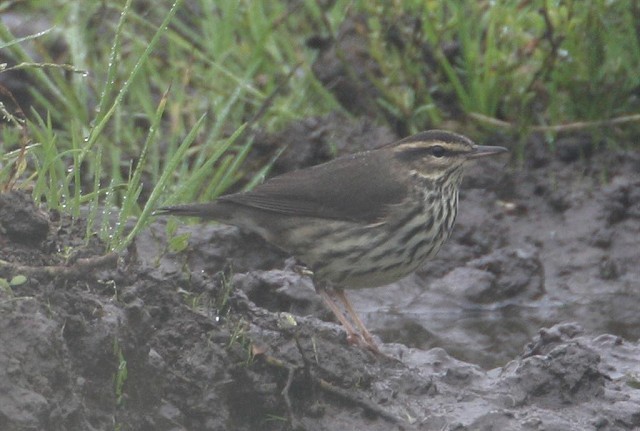
Northern Waterthrush, Cape Clear, Cork (Photo:
Sean Cronin)
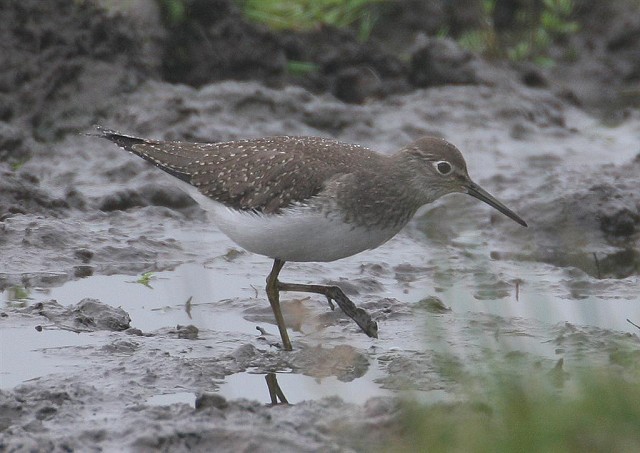
Solitary Sandpiper, Cape Clear, Cork (Photo:
Sean Cronin)
Top of the podium were (by weight of numbers alone) the two Yellow Warblers that arrived in southwest Ireland this week. The first bird was seen well on Cape Clear Island (Co. Cork) on 26th–27th and was thought to have been glimpsed on 24th (but not seen again until the day the identity was proven). The second bird appeared on Mizen Head, also on 26th, and this bird was still present on 27th as well. It may seem amazingly early for a Nearctic passerine, but these are actually the third and fourth August Yellow Warblers here—Britain's first was found on Bardsey (Gwynedd) on 29th August 1964 and a first-winter male was on North Ronaldsay (Orkney) on 24th August 1992. These two dazzling Dendroicas are the third and fourth Irish records of the species (the other two appeared—by a quirky coincidence—on consecutive days in mid-October 1995) and these two are the third and fourth occurrences of Yellow Warbler during the "2000s" (the others being on the Outer Hebrides and mainland Shetland). Back on Cape Clear, those paying a visit on 27th must have been pinching themselves as the island's (and Ireland's) second Northern Waterthrush was found on the central bog, then just 30 minutes later, birders found a Solitary Sandpiper at the very same spot—a truly incredible treble! The first Waterthrush for Cape Clear was found there in September 1983, and this species is the only other American wood-warbler seen in the British Isles in August: one was present on St. Agnes (Scilly) in 1989. The Cape Clear bird was the eighth record for Britain and Ireland; the first arrived on Scilly in 1958. The Solitary Sandpiper was another second for Cape Clear, the first appearing there in September 1974.

Audouin's Gull, Chapel Point, Lincolnshire (Photo: Lee Fuller)
Slipping backwards on the list of goodies this week was the third-summer Audouin's Gull which was present at Chapel Point, north of Chapel St. Leonard's (Lincolnshire), until 23rd. This popular bird had a frustrating habit of spending more time lurking out at sea and, consequently, out of view than it did performing on the beach and despite its nine-day (semi-)residency a number of birders still managed to have the misfortune of missing this rather smart Larid. The county first Stilt Sandpiper, the moulting adult at Coombe Hill Meadows (Gloucestershire), remained only until 21st. A curious report from Devon this week was of an American Robin seen briefly on a roadside hedge at Westward Ho! With no sign the following day, it's all a little odd, but there is one summer record of the species on the books: one spent June and July at Edenderry in County Offaly in 1983.

Wilson's Storm-petrel, Inishbofin, Galway (Photo: Craig Nash)
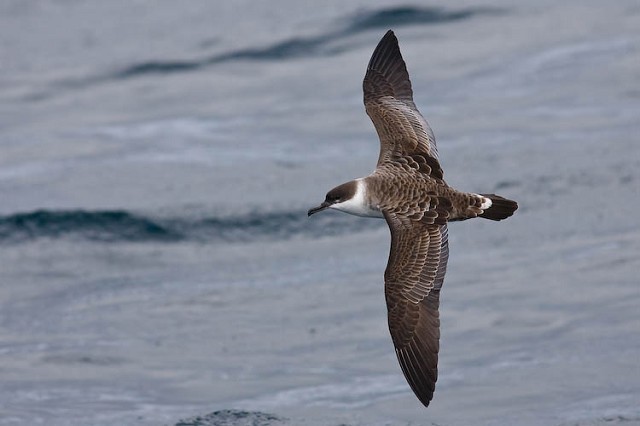
Great Shearwater, Inishbofin, Galway (Photo: Craig Nash)
A "Little Shearwater" was reported from Bridges of Ross (Co. Clare) on 24th, but it remains unclear as to how far out the bird was and exactly what sort of Little Shearwater it might have been. At least three more Fea's Petrels were seen this week, with two further birds noted in Ireland, off Annagh Head (Co. Mayo) on 24th and Galley Head (Co. Cork) on 26th, hiking the tally for the Republic to as many as seven birds this summer. Cornwall, at long last, got in on the act this week, when a Fea's Petrel flew past Porthgwarra on 25th. This is the first report of the species in Cornish waters in almost three years, and the first one off "PG" in six years (and 19 years and 13 days since the famous three-day fly-by of August 1989). On 23rd, another Fea's was reported from Turnberry Point (Ayrshire), the bird being seen four times during the afternoon. A Wilson's Storm-petrel seen from a pelagic trip off Inishbofin (Co. Galway) on 24th was matched by another that flew by Porthgwarra on 26th. Great Shearwaters managed around 50 birds, including 13 of Toe Head (Co. Cork) on 23rd. Four were seen from Annagh Head on 25th while, elsewhere in Ireland, seawatchers at Bridges of Ross logged one on 23rd and two on 24th, with two off Brandon Point (Co. Kerry) on 24th while singles were seen from Clogher Head (Co. Louth) and the Inishbofin pelagic on 24th, with one from the other Clogher Head (in Co. Kerry) on 25th. Four were seen from Galley Head (Co. Cork) on 26th. In Cornwall, one was off Porthgwarra on 23rd with four there on 25th, five on 26th and two there on 27th. On 25th, a Great Shearwater was seen off Esha Ness (Shetland) while two birds were seen from North Ronaldsay (Orkney) on 27th. Only four Cory's Shearwaters were seen this week, singles passing Annagh Head and Porthgwarra, both on 24th, and singles past the latter site on 26th and 27th. Around 140 Balearic Shearwaters were noted over the week, mainly in southwestern counties of Britain and Ireland, with 14 off Sharkham Point (Devon) on 25th the highest count (and one of only four double-figure tallies all week). Six off Cley (Norfolk) on 23rd is also of note. Reasonable numbers of Sooty Shearwaters were recorded from coastal counties this week, with 100 off Toe Head on 23rd and 100 from Bridges of Ross on 25th the largest numbers recorded. Making up the numbers were Annagh Head up in Mayo with 68 on 24th and 69 on 25th, Porthgwarra with 62 on 23rd and 64 on 26th, while Sheringham (Norfolk) racked up 57 birds on 23rd. Pomarine Skuas were again in pretty short supply, with fewer than 30 birds seen; four off Southerness Point (Dumfries & Galloway) on 25th was the highest single count. Seven Long-tailed Skuas were seen during the week: one flew by Bridges of Ross on 21st, a juvenile was off Holme (Norfolk) on 23rd, singles were seen at Southwold (Suffolk) and Frinton-on-Sea (Essex) on 24th and in Devon, one was off Sharkham Point on 25th, with another adult at Doonfoot (Ayrshire) on the same date. On 26th, a sub-adult was seen off Flamborough Head (East Yorkshire). There was another decent early-autumn showing of Sabine's Gulls this week, with at least 20 birds noted. On 22nd, six birds were reported: singles off Whitburn (Co. Durham) and Shell Ness, Sheppey (Kent), and two seen off both Cley and Bridges of Ross. On 23rd, singles were seen at Hartlepool (Cleveland), Chapel Point (Lincolnshire) and Holme, with a further single of Bridges of Ross on 24th. On 25th, seven birds were recorded, including three juveniles off Ardvule Point, South Uist (Outer Hebrides), two adults from a Scilly pelagic, and singles on the Bann Estuary (Co. Derry) and off Strumble Head (Pembrokeshire). On 27th, two juveniles were seen off Strumble Head and one was seen in Staffin Bay, Skye (Highland). Eight Grey Phalaropes were noted on seawatches this week, with Bridges of Ross recording two on 23rd, followed by singles on 24th and 25th. Single birds were also seen from Pendeen (Cornwall) and Mizen Head (Co. Cork) on 24th, off Scilly on 25th and off Land's End (Cornwall) on 27th. Up on Orkney, the adult White-billed Diver remained off South Ronaldsay throughout the week.
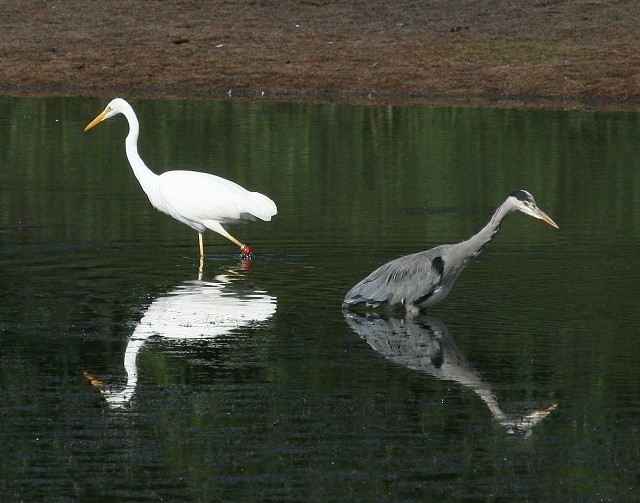
Great White Egret, Blashford Lakes HWT, Hampshire (Photo: Lee Cooper)
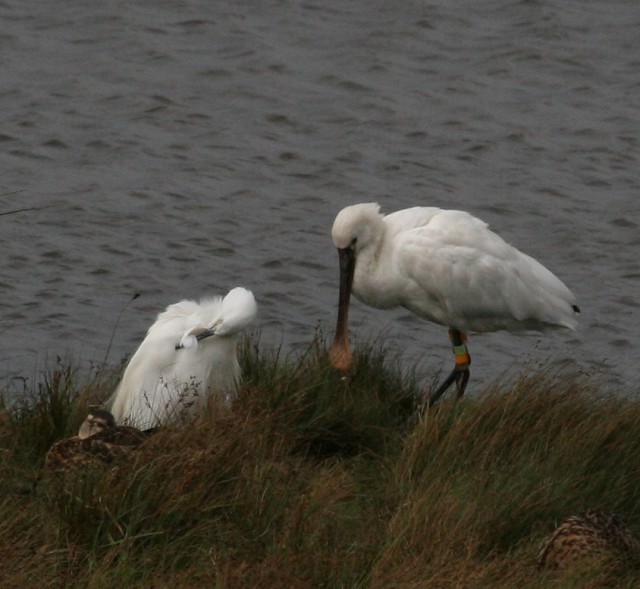
Spoonbill, Pennington Marshes, Hampshire (Photo: Graham Cox)

Common Crane, Dungeness RSPB, Kent (Photo: Ian Curran)
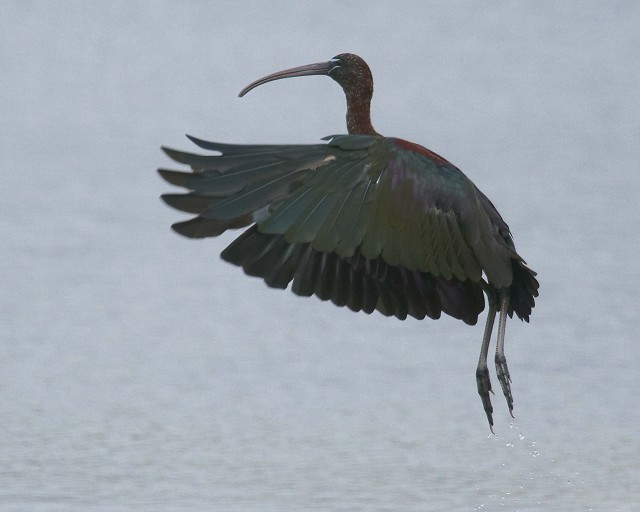
Glossy Ibis, Allerton Bywater, West Yorkshire (Photo: Brian Irvine)
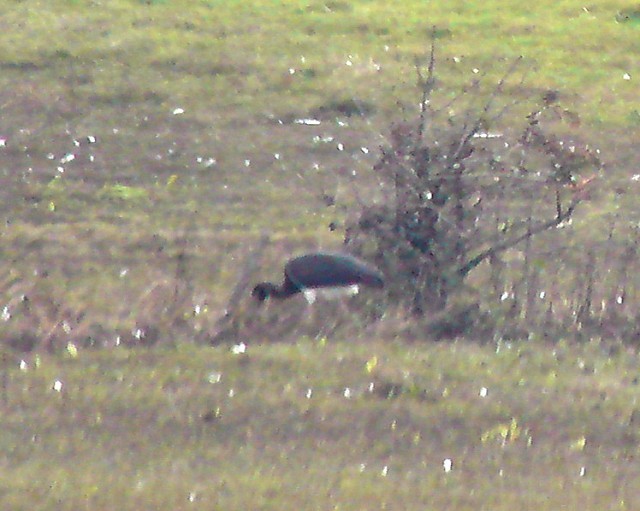
Black Stork, Cawood, North Yorkshire (Photo: Mark Coates)
Single Cattle Egrets in Dorset were seen at Lodmoor on 21st, Swineham GPs on 24th and on Brownsea Island on 25th. In Devon, a Cattle Egret was at Colyford Common on 22nd–23rd. The Great White Egret was at Blashford Lakes (Hampshire) from 22nd–25th with further singles seen at Leighton Moss (Lancashire) on 22nd and Ellesmere (Shropshire) and Horse Shoe Point (Lincolnshire) on 27th. Once again, 19 Spoonbills remained at Havergate Island (Suffolk) to 21st at least, with half a dozen still in Poole Harbour (Dorset) for much of the week. Three birds were at Titchwell (Norfolk) from 23rd–27th, while the long-staying adults at Kinneil Lagoon (Forth) remained to 22nd. Notable singles included the bird at the Newport Wetlands (Gwent) to 23rd, one over the Nene Washes (Cambridgeshire) on the same date (with two birds on the Ouse Washes on 26th), and others at Oakenholt Marsh (Clwyd) to 24th and Kirkcudbright (Dumfries & Galloway) to 25th (with two here on 26th). In Ireland, a Spoonbill was at Westport (Co. Mayo) on 25th. Common Cranes this week included 13 on Brograve Levels (Norfolk) on 24th, two at Dungeness (Kent) from 24th–27th and two more at Lakenheath Fen (Suffolk) on the same date. Single Cranes were at Aldringham (Suffolk) on 23rd and the long-staying bird remained at Caerlaverock (Dumfries & Galloway) to 24th. In West Yorkshire, the Glossy Ibis was at Allerton Bywater until the morning of 23rd before moving to Swillington Ings later the same day. The bird was then seen again at Swillington on 27th. A juvenile Black Stork was seen near Stillingfleet (North Yorkshire) on 24th and was seen again at Cawood on 26th–27th; little doubt that this was the bird seen in Northumberland and Durham recently. The Spotted Crake at Oare Marshes NR (Kent) was present from 21st–25th.
The drake Black Duck was seen again on Blanket Nook, Lough Swilly (Co. Donegal) on 23rd. The drake Ferruginous Duck remained at Chew Valley Lake (Somerset) until 27th and the eclipse drake Ring-necked Duck at Loch Gelly (Fife) was present to 22nd at least. In Devon, a drake Surf Scoter was seen off Dawlish Warren on 23rd and another drake was again off Blackdog (Aberdeenshire) on 26th–27th, while the eclipse (flightless) first-summer male Hooded Merganser remained at Radipole Lake (Dorset) throughout the week.
Three Black Kites were seen during the early part of the week: on 22nd one flew south over Sunk Island (East Yorkshire) and on 23rd, singles were seen at Arklow (Co. Wicklow) and at Warden Point, Sheppey (Kent). Migrant Honey Buzzards were noted at Manston (Kent) and Budby (Nottinghamshire) on 25th, with another at Dungeness (Kent) on 27th, while Montagu's Harriers were seen at Sandsend (North Yorkshire) on 24th and at Crookfoot Reservoir (Cleveland) the following day.

Marsh Sandpiper, Heybridge Basin, Essex (Photo: Bill Plumb)

Red-necked Phalarope, Weston-super-Mare SW, Somerset & Bristol (Photo: Gary Thoburn)

Grey Phalarope, Pennington Marshes, Hampshire (Photo: Steve Purcell)
A juvenile Semipalmated Sandpiper was at Pilmore Strand (Co. Cork) on 21st–22nd with it, or another—these Americans come in twos from time to time—seen at Lissagriffin Lake (Co. Cork) on 26th. Further Nearctic wader vagrants were a juvenile Baird's Sandpiper found at Paxton Pits NR (Cambridgeshire) on 27th—the first record of the species for the county—and Buff-breasted Sandpipers at Loch a'Phuill, Tiree (Argyll) on 26th and Loop Head (Co. Clare) on 27th. The juvenile Marsh Sandpiper at Hickling Broad (Norfolk) remained from 21st–27th. A second juvenile Marsh Sandpiper was discovered at Heybridge Basin (Essex) on 24th, this bird still present on 27th. The adult Pacific Golden Plover was still present at Anthorn (Cumbria) to 24th while the long-staying bird on North Ronaldsay (Orkney) was seen again on 22nd and 26th–27th. The Long-billed Dowitcher at Dundalk Harbour (Co. Louth) was seen again on 23rd–27th and a Pectoral Sandpiper was seen on St. Mary's (Scilly) on 26th. The Temminck's Stint was still to be found at Holland Haven (Essex) on 21st–22nd and a Kentish Plover was at Minsmere (Suffolk) on 25th. The moulting adult Red-necked Phalarope remained at Saul Warth, Frampton-on-Severn (Gloucestershire) to 22nd and, on 23rd, one was found at Weston-super-Mare (Somerset), this bird remaining to 25th. Another Red-necked Phalarope was seen at Swithland Reservoir (Leicestershire) on 26th. Back in Somerset, Grey Phalaropes were seen at Huntspill and Kennard Moor, both on 21st–22nd. A juvenile was found at Pennington Marshes (Hampshire), where it stayed until 25th, with another Hampshire bird being found at Titchfield Haven on 27th. In the West Midlands, a Grey Phalarope was at Marsh Lane NR on 24th.
An adult Ring-billed Gull was again at Nimmo's Pier (Co. Galway) for most of the week with further singles at Lurgan Green (Co. Louth) on 26th and Lough Foyle (Co. Derry) on 27th, while an Iceland Gull was at Liscannor (Co. Clare) on 25th and two single Glaucous Gulls were seen on Lewis (Outer Hebrides) on 24th and the bird at Ramore Head (Co. Antrim) remained until 25th at least. Two Caspian Gulls were reported this week in Norfolk: one, a near-adult, at Blackborough End on 22nd and a third-summer at Salthouse on 23rd. An adult Caspian Gull was seen at Southampton (Hampshire) on 26th. The juvenile White-winged Black Tern remained at Covenham Reservoir to 21st, and the adult was still to be seen at Inverness (Highland) to 22nd.

Red-backed Shrike, Landguard NR, Suffolk (Photo: Chris Mayne)

Wryneck, Landguard NR, Suffolk (Photo: Sean Nixon)
Snowy Owls were seen this week at Balranald, North Uist (Outer Hebrides) and on the Mullet (Co. Mayo). A Hoopoe was seen near Greatstone-on-Sea (Kent) on 26th–27th and was thought to have been present there for a week or so. The juvenile Citrine Wagtail on Fair Isle (Shetland) remained to 23rd, when a second bird appeared. A probable flew east over Linlithgow Loch (Lothian) on 25th. An adult Tawny Pipit was seen on Blakeney Point (Norfolk) on 24th–26th. Four Red-backed Shrikes were reported this week: one was on Whalsay (Shetland) on 21st, another was reported from Horseshoe Point in Lincolnshire on the same date, and two were seen in Suffolk (one at Landguard NR on 25th–27th and a juvenile at Thorpeness on 27th). A Wryneck was seen at Montrose Basin (Angus) on 21st, with further singles at Landguard (Suffolk) on 22nd, Kelling Heath (Norfolk) from 23rd–27th, and Fair Isle (Shetland) on 24th. On 26th–27th, a Wryneck was seen at Hetton Lyons (Co. Durham) while a dead Wryneck was picked up at Exnaboe, on Shetland, this week. The Shore Lark at Spurn (East Yorkshire) was seen again on 25th.
An Aquatic Warbler was reported from Marazion Marsh (Cornwall) on 24th. On Shetland, the Booted Warbler remained at Sumburgh Farm to 21st and a Marsh Warbler was at Norwick, Unst on the same date. There are just two Icterine Warblers to report this week: one was seen briefly at Jockey Shield, Castle Carrock (Cumbria) on 22nd and another was at Snettisham Coastal Park (Norfolk) on 24th. In Suffolk, a Melodious Warbler was found at Sizewell on 26th (the species is still a rare bird in East Anglia, but a continuing northwest push of breeding birds may see that change in the years to come) and a Barred Warbler was seen at Bawdsey on 23rd. Another Melodious Warbler was trapped, ringed and released at Brew Pool (Cornwall) on 27th.
Late news from last week was of a Serin seen at Dunwich Heath NT (Suffolk) on 20th. Another Suffolk Serin was seen at Reydon on 23rd. An adult Rose-coloured Starling was seen at Deerness (Orkney) on 25th and 27th, while nearby on Shetland, a Common Rosefinch was on Fair Isle on 22nd–23rd, with perhaps the same bird seen again there on 25th.
Photo of the Week

Sooty Shearwater, Guernsey pelagic, Guernsey (Photo: Paul Hillion)
Pelagic trips are becoming increasingly popular as a way of getting close views of seabirds normally seen only as a dot on the horizon by dedicated seawatchers. A perfect example of the delicacies on offer is the Sooty Shearwater photographed at close quarters by Paul Hillion on one such trip off Guernsey. Even with a short-focal-length lens, Paul has captured the rich plumage details of this handsome bird. Not satisfied with a mere snapshot, though, Paul has used a number of techniques to put together a very pleasing composition: using vertical format with the reflection included, giving the bird space to fly into, aligning the bird's body with a third-line and placing its head at an intersection of thirds. He has also used bright, contrasty tones to create a punchy image that brings out the wonderful textures in both the bird and the sea.
Other notable photos

Grey Heron, Venus Pool NR, Shropshire (Photo: Jim Almond)

Little Egret, Summer Leys LNR, Northamptonshire (Photo: Richard Bedford)

Marsh Harrier, undisclosed site, Angus & Dundee (Photo: Mark Caunt)

Red-necked Phalarope, Weston-super-Mare SW, Somerset & Bristol (Photo: James Packer)

Marsh Harrier, Leighton Moss RSPB, Lancashire (Photo: Andy)

Bittern, Leighton Moss RSPB, Lancashire (Photo: Ian Hargreaves)

Sanderling, Titchwell RSPB, Norfolk (Photo: Nigel Pye)

Sparrowhawk, Cley Marshes NWT, Norfolk (Photo: Richard Bedford)

White-eyed Gull, Egypt (Photo: Nick Clayton)

European Storm-petrel, Great Shearwater and Fulmar, Inishbofin, Galway (Photo: Craig Nash)

Dunlin, Hayle Estuary, Cornwall (Photo: Greg Wills)

